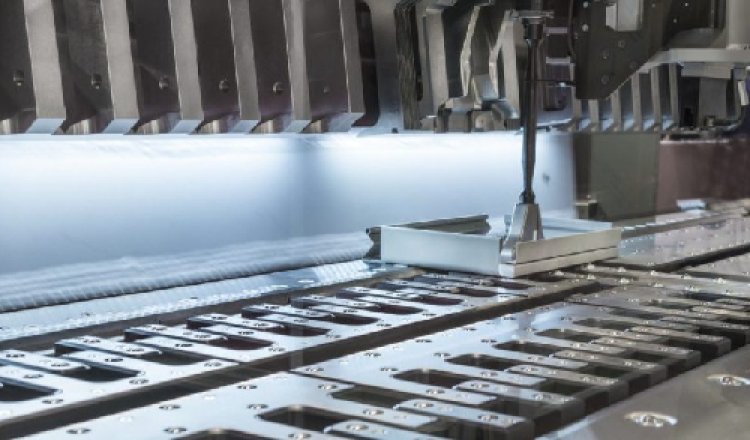Crafting Quality Tooling for Progressive Die Manufacture
High-precision metal stamping for automotive, aerospace, electronics, and medical industries.
Share this Post to earn Money ( Upto ₹100 per 1000 Views )
The art of crafting quality tooling is the foundation of manufacturing processes. The symbiotic link between tools and dies sets the tone for modern manufacturing. It ensures that every component made, carries the rhythm of accuracy, effectiveness, and quality.
Tool manufacturers in progressive die manufacturing utilize advanced precision equipment and skilled craftsmanship to create high-quality tooling.
Each engineering concept is given life by these tools, which transforms them into high-quality dies and instruments. Let us discuss the process of creating quality tooling below:
The Design Phase
The design process in high-precision metal stamping demands more focus. It involves laying out tool and die requirements, which may require the utilization of computer-aided design techniques.
Every detail, from measurements to materials, tolerances to surface treatments, is thoroughly established. This is to guarantee that the finished product meets the stringent quality standards.
If you are creating a custom tool, make sure you have defined all the necessary measurements. Defining your requirements clearly aids in effective manufacturing.

Choosing material
Selecting the right material is crucial for creating high-quality tools and dies. Tool manufacturers ensure that, the material is durable and hard.
The selection process considers how well the material matches the intended purpose. Popular materials include tool steel, carbide, and other alloys. Each has its own set of properties.
Carbide provides superior hardness and heat resistance. This is suitable for high-speed machining. Alloys can offer a balance of strength and flexibility. By carefully considering these factors, manufacturers ensure the optimal performance of their tools and die.
Machining and Fabrication
After designing and selecting materials, the process of machining and crafting starts. This may require precision equipment. Tool manufacturers make use of Computer Numerical Control machines (CNC), lathes, and grinders.
These will help to meticulously carve, shape, and mold the material into its final shape. CNC machines provide excellent precision. This allows for intricate designs and tight tolerances.
Lathes and grinders further refine the material. It ensures smooth finishes and exact dimensions. This meticulous process is critical to producing high-quality tools. So that your tools meet stringent industry standards. They can perform reliably in their intended applications.
Assembly
After machining, the component pieces are meticulously assembled to form the whole tool. This is the critical point where accuracy is required to guarantee proper functioning of the final product.
Each piece must fit together perfectly. This is to maintain the integrity and functionality of the tool. Any slight misalignment or error might cause a tool to stop working as needed. This may lead to potential downtime and increased costs.
Therefore, attention to detail and severe quality control during assembly are essential for producing an efficient tool.
Testing and Quality Control
After assembly, tools and dies are carefully inspected to ensure they satisfy specifications and quality standards. Any faults discovered are addressed to ensure that they are fit for usage.
Tools and dies wear and tear with time. It requires frequent maintenance and repair. To ensure their lifespan, routine inspections and maintenance are crucial.
Final words
The tool and die manufacturing process involves several tools and dies. It serves as the foundation of modern manufacturing. This allows for the production of parts and components with excellent precision and quality.

 shekharchaudhary
shekharchaudhary 













